In Schools, is Community as Important as Pedagogy?
Through a research initiative and a recently completed elementary school installation, furniture manufacturer KI is beginning to uncover the connections between interpersonal connections and learning.
by Metropolis
The average American spends up to 15% of their life in school. Add the time spent seeking higher education and this number grows much larger. It used to be that we spent this time sitting at heavy, rigid desks, socializing in designated areas, and using libraries solely for checking out books and individual study. Thankfully, now more than ever, education design is focused on adaptability, mobility, and community with designers and administrators alike seeking out fresh ways to challenge tradition.
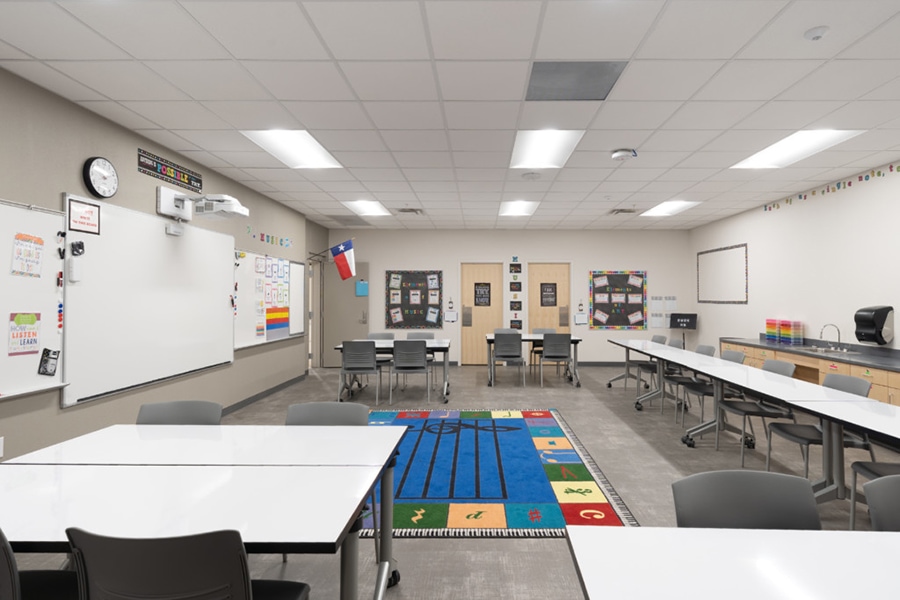
Breaking rigidity thoughtfully, KI's carefully designed furniture addresses the larger questions of fostering a sense of community in schools.
According to KI’s vice president of Education, Bryan Ballegeer, there is no hierarchy between community building and pedagogy itself: “They really go hand in hand”. When unpacking the larger scope of what ‘community’ means for education, he explains that “inquiry based learning” can be used to integrate specific cultural contexts within the classroom. “Say you live in a place where homelessness is a big problem. Schools can really approach the larger community they’re situated in, ask questions, and bring these very real problems into the curriculum as topics of discussion.”
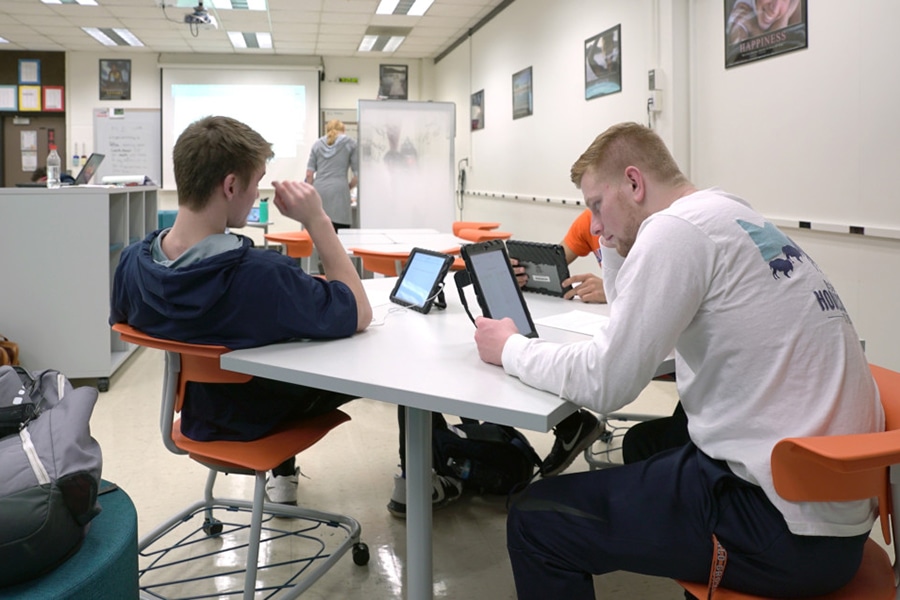
Design, layout and versatility of furniture respond to the dynamic and robust users and agile environment of the elementary school classroom.
Internally, designers can help foster a sense of community within schools through the careful specification of furniture. Last year, KI began research through the Ruckus Grant Program in order to discover the impact that furniture alone has on learning. By partnering with nine schools, they developed completely mobile and fluid classrooms by using KI’s Ruckus Collection, MyPlace Lounge, and Connection Zone Screens. What they found was a 35%-61% improvement increase in the furniture’s ability to help the students move and learn in the ways that they need and desire.
Additionally, at Overton Ray Elementary School, recently designed by BYSP Architects in Burkburnett, TX, they found these principles to ring true, especially when it comes to choice. “I describe it as this 2:30pm feeling, when, as adults, we have the option to get up and go sit on a different chair or find a place with better light in order to take a moment to recoup. Kids often don’t have that option, but we know that it is important to give it to them,” Ballegeer says. At Overton, kids have a communal room with an adaptable program, opening up the possibility for connection, independent study, or simply a place to relax.
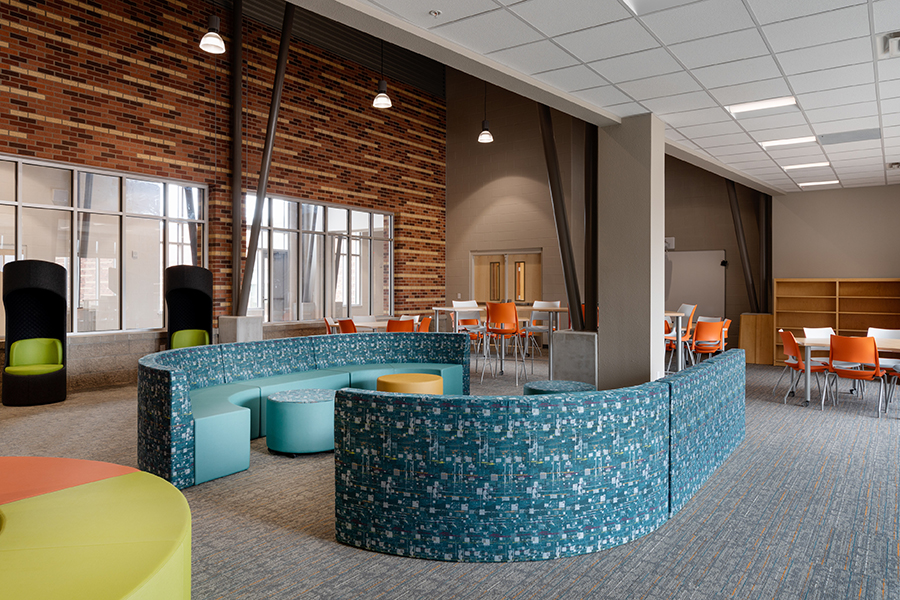
Flexible and modular furniture solutions open up a host of possibilities that cater to groups and individuals alike.
This case study shows that not only are designers specifying more flexible furniture solutions, they are rethinking entire interior typologies while integrating new technologies in order to develop innovative spaces (such as maker-spaces in libraries or lounges that are designed to foster stronger student/teacher connections). But despite digital tools being an integral part of the learning experience, how we interact as humans seems increasingly relevant: “There is still something powerful about sharing ideas by physically writing on a whiteboard, rather than communicating through screens,” Ballegeer says.
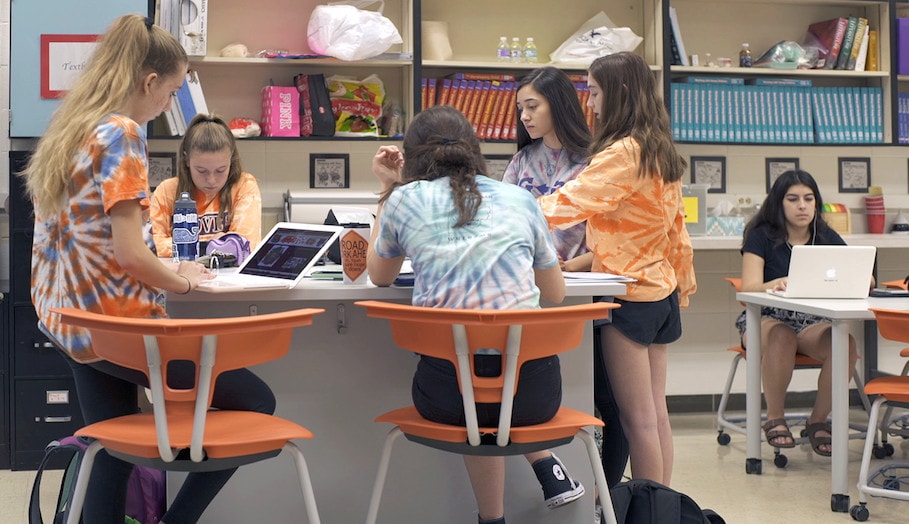
KI facilities human interaction, collaboration and discussion through its classroom furniture.
To avoid repetitive routines of school life and to ensure the health and well-being of all those who occupy these spaces, the creation of unique and personal experiences remains a critical concern for designers as they work towards an agreement across teachers, administrators, and students. “Achieving cohesiveness is a big challenge,” Ballegeer concludes, “when I approach a school, I want to know what makes the most sense for them, rather than relying on the latest trends. Ultimately, your technology, your furniture, your physical space…does not dictate who you are. Your community and culture is who you are.”
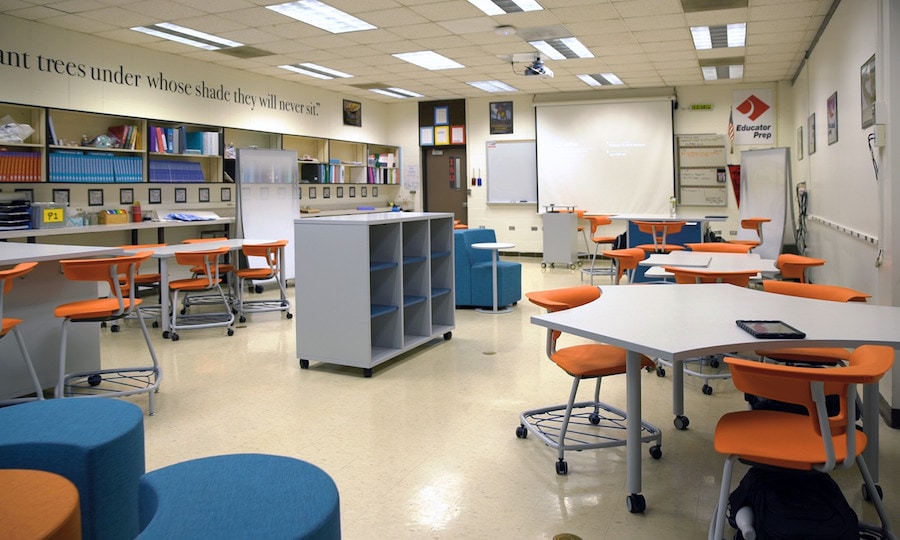
Classrooms at Buffalo Grove High School are designed to build connections and nurture communities.
